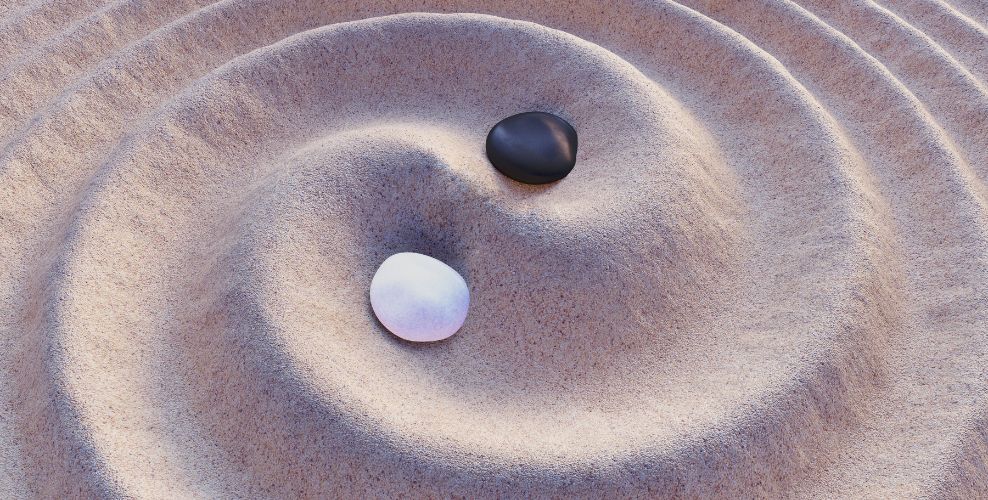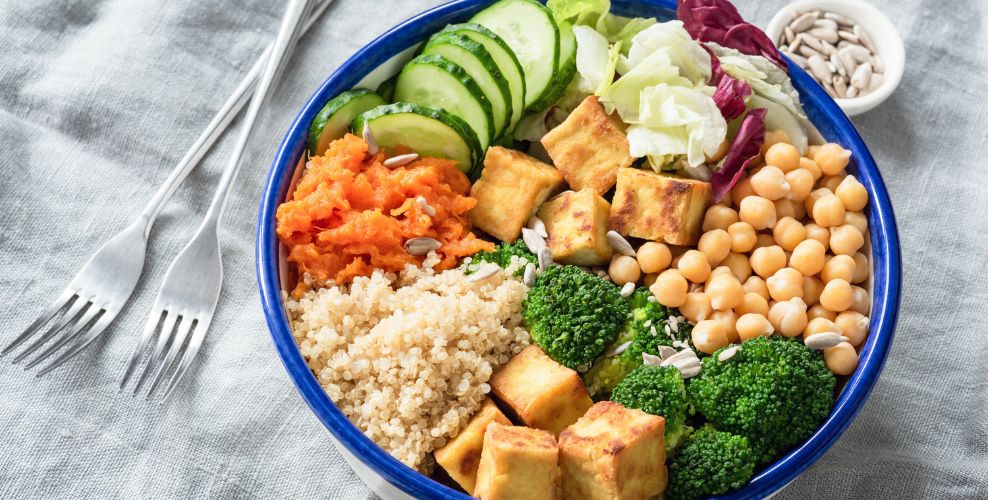The importance of yin and yang
Quick overview
- Yin and yang is much more than just a symbol; it’s an ancient Chinese philosophy that has influenced many practices, including martial arts, TCM and Feng shui.
- The origin of the yin and yang symbol may surprise you, but it has come to represent harmony and balance in all things – from nature to daily activities, diet and even exercise.
- Yin and yang energy are both equally necessary in everything we do in our lives. They can become unbalanced, but there are plenty of practices that can be built into our everyday lives to rebalance yin and yang – from how you move, eat, and breathe to the way you decorate your home.

The yin and yang symbol, and more importantly the philosophy behind it, is very important in traditional Chinese medicine (TCM). So much of TCM follows philosophies around working with nature and finding balance in our physical, emotional, environmental and spiritual health. Yin and yang describe not just energies, but a way of living. Keep scrolling to find out more about the beliefs and history behind the symbol and how you can put its meaning into practice to bring the harmony of yin and yang to your life.
Origins of yin and yang
The concept of yin and yang has its roots in the 9th century I Ching text that is over 3000 years old. This book influenced eastern philosophy, medicine and martial arts. The I Ching discussed the idea that there is a flow of yin and yang energy in the natural world. The two energies come together harmoniously to create the foundation of all things in nature.
Examples of this yin and yang energy can be found everywhere – day and night, cold and warm, rest and action. Interestingly, the two words were used independently to describe the different energies and were only put together in a verse in the Shijing or ‘Book of Songs’.

Yin and yang balance
The yin and yang symbol was born out of ancient Chinese time-keeping methods, which measured the length of the shadows throughout the year.
The yang aspect showed the period from the winter solstice, where the days become longer. The yang aspect signified the summer solstice, where the days became shorter. So, yang is associated with the sun and action, while yin is associated with the moon and rest. The symbol, as a whole, represents the full cycle of the year, light and dark, warm and cool, fallowing and harvesting.
The typical modern yin and yang symbol also has a little black spot in the white section and vice versa. This represents the idea that yin and yang are not opposing forces, that they are in fact interconnected – indicating that even the black and white is not that ‘black and white’.
What is the difference between yin and yang?
Yin is considered to be the feminine, grounded energy. Put simply, yin is more ‘being’, less ‘doing’. Yin is the energy of going inwards, of imagination, wisdom, intuition, rest and contemplation. Far from being boring or unproductive, yin is essential to creating space and energy for the yang aspect.
Yang energy is associated with masculinity, the fire element, courage, ambition, action and forward movement.
Importance of yin and yang
Is one energy better than the other? Absolutely not! It can be exciting to be in the yang energy, which is more action-oriented and working towards your goals; without yang, not a lot would get accomplished. However, yin energy is just as necessary to overall wellbeing. Moving from yang to yin allows us to replenish, repair and contemplate the next move.
The importance of finding the balance between yin and yang often isn’t realised until it has been lost. An energetic imbalance can lead to increased anxiety, mood swings, a lack of creativity and imagination, a sense of pressure or doom, and even a loss of purpose. Bringing the harmonious balance back helps strengthen relationships, including the one with yourself. It also supports a greater sense of self, of trust in your own wisdom and abilities.
Physically finding and actively maintaining the yin and yang balance can lead to a healthier body and mind, and more intuitive behaviours around eating and exercising (i.e. ‘what does my body actually need today?’)

How to balance yin and yang
Here are some tips and tricks for balancing yin and yang in your everyday life:
- Incorporate yin and yang into your exercise routine by mixing it up. For example, if you love to do high-intensity workouts most of the time (yang), try a slow-moving yin yoga class, tai chi, Qi gong or seated meditation every other day.
- Get out in nature every day. Try ocean swimming, barefoot walking around your backyard or forest bathing. For more on the benefits of spending time in nature, click here.
- Get some sun and wind on your face and go outside. If you sit inside for work a lot, spend your lunch breaks basking in the sun or taking a stroll.
- If you tend to spend a lot of time in a more masculine, yang energy – such as confidence, goal orientation and structured thinking – try to find ways to soften and be open to the feminine yin side – practice self-love, forgiveness and compassion, prioritise your needs and allow more space for contemplation, intuition and rest, whatever that looks like for you.
- Alternatively, if you tend to be in your yin, feminine energy a lot, embrace your masculine yang side. Where can you be more assertive in your life? What relationships or demands on your time need better boundaries? What have you been avoiding taking action on?
- Breathwork is a powerful way to bring more yin back into a yang day. Focus on your breathing, slowing down, breathing deeply into the belly and exhaling like you’re letting something go. Lion’s breath can be particularly helpful for those stressful days.
- Engage in activities that naturally have a yin and yang balance. Many activities have a certain level of action and discipline, but also require a time of patience, trust and rest. Becoming a master sourdough maker fits this description perfectly, as does gardening, where the action isn’t immediately followed by a reward.
- Learn how to support your jing – an important concept in TCM that describes your vitality and the essence you were born with. Without jing there can be no yin and yang!
Balancing yin and yang with food
In TCM, all aspects of life are seen to exist in an ever-changing balance of yin and yang. There’s a big focus on diet, with no surprise that food is a great way to balance yin and yang energy. Different foods have certain qualities - cooling, refreshing foods are yin, while warming, spicy or intense foods are yang.
Eating more yin, cooling foods in the summer helps to balance the yang heat of the season. So of course, more warming, spicy foods are perfect for winter. We love warming, yang foods for the winter. You may find that you already follow this intuitively, but now you can also do so mindfully!
Flavours can also be yin and yang. Balance flavours and food types: starches and meats are balanced out by vegetables; and sweet is balanced by salty, spicy or bitter.

Yin and yang in your home
Many of us are spending so much more time at home, so you may be wondering how you can improve the energy of this space. In fact, the concept of yin and yang is a principle of Feng shui – the Chinese practice of creating a home environment that allows the life force energy (qi) to flow. It’s thought that creating good Feng shui in the home allows people to be in greater balance and harmony with their surroundings. Within a home, you have yin spaces (bedrooms) and yang spaces (home office, kitchen, living room if it’s a busy home!).
Bring more light and life to areas where work needs to be done, such as the kitchen or study, and more softness, such as lower lighting, soft colours and fabrics to the yin spaces.
Energetically, clearing space and considering how to optimise furniture positions for better flow of qi also helps to bring balance into the home. To learn more about the traditional Chinese concept of qi, click here.
The concept of yin and yang can be brought into any area of your life that needs greater balance and harmony. If you’re fascinated by the philosophies of traditional Chinese medicine, you might also be interested in taking our 5 Chinese Elements quiz.
















